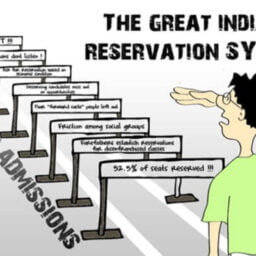INTRODUCTION
Law has been formed from two sources since the institution of courts as a means of administering justice. The legislature is the primary source, followed by judge-made law, which is the judicial interpretation of previously enacted laws. These two techniques of law-making were also recognized by India’s Constitution. The law as determined by the Supreme Court of India establishes the Law of the State, according to Article 141 of the Indian Constitution. It thereby codifies what had hitherto been an unaltered convention, namely, the acceptance of judge-made law.
Judicial activism is described as a court decision based on the judge’s political and personal reasoning and prudence in deciding the case. It’s a legal term for court decisions that, in part or entirely, are based on the Judge’s political or personal interests rather than actual or established law. As quoted by V.G. Palshikar in his article, JUDICIAL ACTIVISM[1], “Judicial Activism is my word for the mechanism of judges making laws. Judicial Activism, as opposed to Judicial Passivism, refers to a judge’s constructive application of current laws to improve the law’s usefulness for social good”.
In India, the Public Interest Litigation (PIL) has enabled judicial activism (Public Interest Litigation). Before adjudicating a case, the court must be satisfied that the person who approaches it has a legitimate interest in the matter.
As a consequence, the practice that has come to be known as Judicial Activism is not new. It started with the formal establishment of courts as a means of justice administration. Several earlier examples of judicial activism can be found in the judgments of the Privy Council, the Federal Court, and the Supreme Court of India during its formative years. Recent examples from the era when Judicial Activism was accepted as a legal mode in modern India are also worth noting.
All laws passed before 1950 that disagreed with the Constitution’s provisions became null and void. The Supreme Court of India enunciated the doctrine of prospective overruling. This is a seminal experiment in judicial activism, writes CNN’s, Ravi Agrawal.[2] In a nutshell, the Supreme Court of India ruled in Golak Nath’s case that legislation that has been found unconstitutional as a result of the enforcement of Article 13 of the Constitution would be overturned prospectively. Acts taken under such laws before the adoption of the Indian Constitution were made illegal retroactively, so such an understanding was required.
The entire Supreme Court was reassembled in 1973. 13 Judges considered the authenticity of the Golak Nath case judgement while determining the writ petition in His Holiness Kesavananda Bharati Sripadagalvaru v. the State of Kerala.[3] Reading the limits on Parliament’s power to amend the Constitution is unquestionably a type of judicial activism.
The Supreme Court’s decision in Minerva Mills Ltd. v. Union of India[4] is yet another example of judicial activism. In the Minerva Mills case, the Supreme Court of India held that in situations of extreme urgency and public interest, it may be mandatory for a judicial, quasi-judicial, or executive authority to act quasi-judicially to render immediate orders in circumstances where the rule Audi alteram partem cannot be applied in its true spirit.
The most contentious Supreme Court decision concerning judicial activism is in the matter of ADM Jabalpur v. Shivkant Shukla[5], in which Article 21 was examined, which states that no person will be deprived of his life or personal liberty except in accordance with legal procedures. Although Justice Chandrachud, who authored the opinion, was chastised for drafting a pre-government decision, the legal proposition he advanced was an exceptional example of judicial activism. Justice Chandrachud has read Article 21 in this way, upholding the legality of legislation that requires acceptance in order to retain the country’s sovereignty in the event of internal or external aggression.
One of the most common criticisms of judicial activism is that the judiciary often rewrites the Constitution and legislative enactments without saying so and that as a result, some judges’ personal views metamorphose into legal norms and constitutional values. Another criticism is that the concept of separation of powers is being reversed in the name of judicial activism, and the judiciary is undermining the legislative and executive branches’ authority by intruding into their jurisdictions.
The legislative and executive branches of government should not be flooded with judicial activist zeal. That would be disastrous. Judges are unable to serve as legislators because they lack both the people’s mandate and the practical wisdom to determine the needs of different segments of society. Special factors justify judicial activism in the aforementioned regions. However, serious questions about the desirability of judicial activism emerge when there are no compelling grounds or circumstances to explain it. The reach of this paper does not allow for an exhaustive examination of judicial decisions exposing an activist propensity where the circumstances of the case do not warrant it.
In recent days, Article 142 of the Indian Constitution has been used as a basis of authority for issuing such directives. A close examination of Article 142, as it currently appears in the Constitution, reveals that it has no such authority. It was enacted to give the Supreme Court of India sufficient power to ensure that its orders in litigation brought before it under the Constitution’s jurisdiction are properly executed because no statutory machinery or mechanism for the execution of Supreme Court orders not made in its civil or criminal jurisdiction has been established.
CONCLUSION
Judicial activism characterized by moderation and self-control is certain to restore people’s confidence in the effectiveness of democratic institutions, which in turn would activate the executive and legislature to work efficiently under the watchful eye of the judiciary, as the Constitution requires.[6] In my judgement, cannot be used to usurp the Executive or Legislative authorities. The Supreme Court of India has consistently held that no court can issue a writ of mandamus ordering the legislature to legislate on a specific subject. The Constitution expressly vests in the Legislature the power to legislate. The Courts do not have such legislative authority under the Constitution. The Courts’ legislative action stems from its allowed Judicial Activism in order to provide a proper and thorough interpretation of the law’s requirements. Judicial activism cannot be used to fill in the gaps in legislation or to enforce the law.
Author(s) Name: Uthra Varadharajan (Student, Symbiosis Law School, Hyderabad)
References:
[1] V.G. Palshikar, Judicial Activism, (2007) 7 Law Rev GLC 56
[2] M.N. Rao, Judicial Activism, (1997) 8 SCC J-1.
[3] Kesavananda Bharati v. State of Kerala, [1973] 4 SCC 225: AIR 1973 SC 1461.
[4] Minerva Mills Ltd. v. Union of India, [1980] 2 SCC 591: AIR 1980 SC 1789.
[5] ADM Jabalpur v. Shiv Kant Shukla, AIR 1976 SC 1207.
[6] Ravi P. Bhutia, Evolution of Judicial Activism in India, (2003) 45 JILI 262















